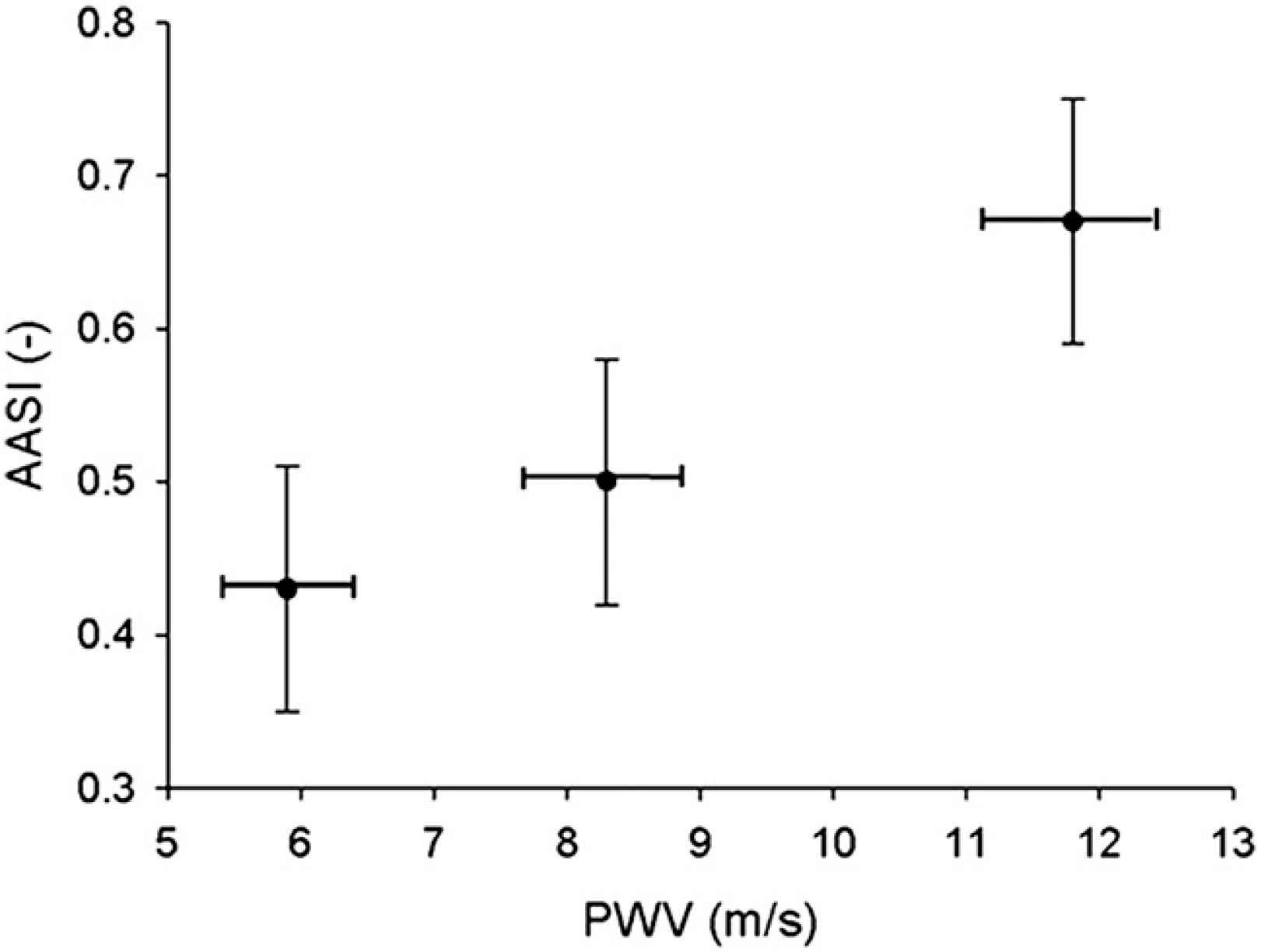12.05 AMBULATORY ARTERIAL STIFFNESS INDEX: ANOTHER AMBIGUOUS STIFFNESS INDEX?
- DOI
- 10.1016/j.artres.2011.10.190How to use a DOI?
- Open Access
- This is an open access article distributed under the CC BY-NC license.
Introduction: The Ambulatory Arterial Stiffness Index (AASI), derived from ambulatory blood pressure (ABPM) recordings, has been proposed as a surrogate marker of arterial stiffness. However, there is controversy to which extent it reflects stiffness or is affected by other parameters. Using a computer model of the arterial circulation, the relative importance of the different determinants of the AASI was explored.
Methods: Arterial distensibility (inverse of stiffness), peripheral resistance, heart rate, maximal cardiac elastance and venous filling pressure were varied from 80 to 120% of their initial value in steps of 10% to generate 3125 BP-values, mimicking the daily fluctuations in one theoretical subject. From this dataset, we assessed the confidence with which AASI can be derived in this subject, as well as the influence of different individual parameters on AASI. To assess the ability of AASI to detect large changes in arterial stiffness, two additional subjects were simulated with a distensibility of 50% and 25% of the default distensibility, respectively.

Results: The distribution of AASI-values, obtained from 10000 ABPM simulations (each using 72 BP-values randomly selected among 3125) was normal (AASI=0.43±0.04 (SD)).
An increase in heart rate, distensibility or resistance from 80 to 120% of its default value caused the AASI to decrease by 37, 21 or 9%, respectively. Whereas there was no overlap in the distensibility ranges for the three theoretical subjects, the was considerable overlap between the AASI distributions.
Conclusion: The confounding effects of resistance and heart rate limit the use of AASI as a marker of stiffness.
Cite this article
TY - JOUR AU - J.G. Kips AU - S.J. Vermeersch AU - P. Reymond AU - P. Boutouyrie AU - N. Stergiopulos AU - S. Laurent AU - L. Van Bortel AU - P. Segers PY - 2011 DA - 2011/11/29 TI - 12.05 AMBULATORY ARTERIAL STIFFNESS INDEX: ANOTHER AMBIGUOUS STIFFNESS INDEX? JO - Artery Research SP - 201 EP - 202 VL - 5 IS - 4 SN - 1876-4401 UR - https://doi.org/10.1016/j.artres.2011.10.190 DO - 10.1016/j.artres.2011.10.190 ID - Kips2011 ER -
